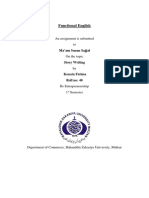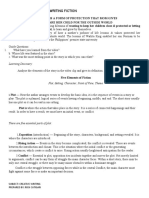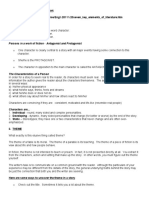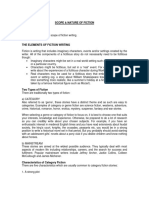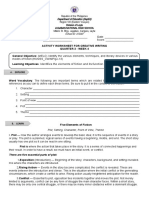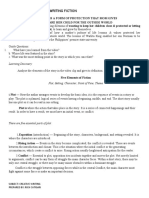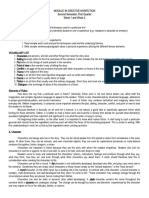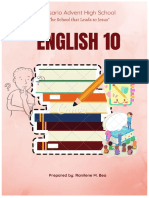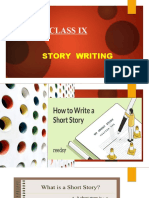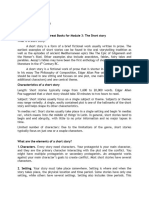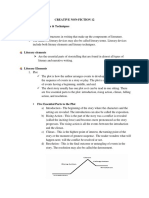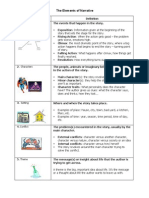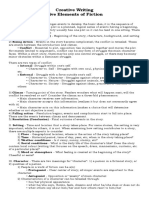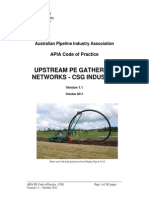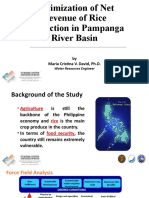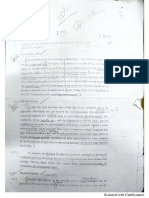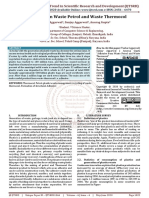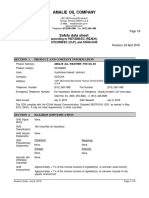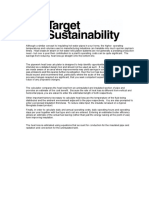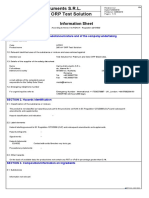FYBFM/BMS/BAF/BBI - Semester – II
Communication Skills – II (AEC)
Unit 3 – Creative Writing
STORY WRITING
Story writing refers to the method of writing in which the writer narrates a series of events
that has led to a problem, the progression of the same and the end result that has led to the
current situation of the characters in the story.
A story can be about a real or fictional incident including real-life or imaginary characters.
Story writing, thus, is a process of narrating real or imaginary incidents involving
imaginary/real people.
Components of a Story –
Every story is expected to have the following components -
• Characters
• Setting
• Plot
• Theme
• Conflict
• A story also has a point of view in which it is narrated and a style in which it is
written.
• Characters - No story is complete without a character. Every story would either
revolve around multiple characters or a single character. Characters drive the story.
Having strong characters of all types (funny, serious, clever, innocent, etc.) is what
will make the story interesting.
• Setting - The term ‘setting’ refers to the physical surroundings in which the story
takes place. The whereabouts of the characters might also contribute to the setting of
the story. The setting of a story can be a forest, a house, a street, space or outer
universe, a small island, a train and even someone’s mind. It is up to the writer to
include all the details that they think would make the story more colorful.
• Plot - The plot of a story refers to what goes on in a story or what the story is about. A
plot includes various courses of events/actions, climactic points and resolution. A plot
comprises of five different elements such as
• Exposition – The point at which the characters and setting of the story are presented;
in other terms, the beginning of the story.
1
� • Rising action – The point in the story when the main character comes across an action
or a course of events that becomes an impediment or a conflict in the otherwise
undisturbed peaceful life of the main character and those around them.
• Climax – The most intriguing part of a story which also becomes the turning point of
the story.
• Falling action – This includes actions or events that lead to the conclusion. This point
describes the positive or negative turn of events that has taken place as a result of the
protagonist’s decision at the climax. At this point, you can also see how the various
characters work together or alone to solve the problem or conflict.
• Conclusion – This point in the story marks the end. The conclusion, be it a happy or a
sad one, is the end result of the falling action.
• Theme - The theme of a story is the idea or subject that pervades the whole story.
This is the concept on which the whole story revolves. Examples of themes can be
family relationships, music, love and romance, war, rebellion, etc.
• Conflict - The term ‘conflict’ refers to the problem in the story.
• When all is going on well, there is one point in the story when the main characters
come across an obstacle that impedes their journey to achieve a set goal.
• The conflict is what gets the protagonist to move out of their comfort zone, face the
antagonist, act bravely to solve the problem and find ways to attain their goal.
Every story should have a beginning, middle and end.
• The Beginning - The beginning of the story determines if the reader would want to
continue reading or not. So, it is very crucial to have a rather riveting start. You have
got to keep the readers hooked from the very first moment itself. The most common
way to start a story is with the use of phrases like “A long time ago” or “Once upon a
time”. One can also start the story directly with the character introduction, the
portrayal of the setting or even an action.
• The Middle - The interest created in the reader of the story in the beginning should be
sustained in the middle too. This can be done by making use of language cleverly,
using literary devices and even the smallest detail if one thinks it will drive the story.
Using descriptive language can further help to give the readers a visual representation
of everything that is going on in the story.
• The End- The ending or epilogue is the final chapter at the end of a story that often
serves to reveal the fates of the characters.
Ways of ending a story -
• A resolved ending - Resolved ending is where all threads of the story are clearly and
satisfyingly resolved. There should not be any loose ends.
2
� • An unresolved ending - An unresolved ending is inconclusive. Such ending also
leaves the readers with more questions than answers.
• An expanded ending - Expanded ending, expands beyond the events of the narrative.
It is usually told in the epilogue of a book. This might include a jump forward in time
(for example, 3 years later in the future) or a change in perspective. It may also
reframe the way readers have been thinking about the story.
• An unexpected ending - An unexpected ending is something that readers did not
expect. It could be earth-shattering, clever or subtle.
• An ambiguous ending - Ambiguous ending is open to interpretation because the
ending is unclear. There are many open possibilities which can go many ways.
Readers are invited to think about the events and clues in the story and draw a
conclusion. An unresolved ending does not provide enough information so readers
will not know what happens next but an open-ended or ambiguous ending allows
readers to come to different conclusions.
• A tied ending brings the story full circle—it ends where it begins.
The Features of a Good Story are as follows -
Order: The story should be narrated in a sequential order starting from the beginning when
the characters are introduced, important events happen and then the conclusion which brings
the ending.
Theme: One must follow the theme provided in the starting lines of the story writing
question and should avoid inserting or inventing newer story themes.
Concise and Short: Adhere to the word limit provided for writing the story and weave an
interesting narrative within the limit.
Every story should have a beginning, major event and conclusion.
How to Write a Good Story
A good story can be written by focusing on the following points -
• Characterization is one of the most influential parts of the story. The diversity of
characters and the way their characteristics are described will decide the reader’s
interest in the story.
• The characters can be introduced in different ways – the entire story could be narrated
from one of the character’s point of view, dialogues could be included between
various characters or even a narrator could be made to introduce the characters and
provide their background information.
• Imperfect Character - An imperfect character draws much more attention than a
perfect character. Even a character who seems to be perfect will have a character flaw.
3
� • Vices of Character - Every person is made of virtues and vices, and so most writers
often choose their main characters to have vices that bring about their downfall or
struggles that make their journey more interesting.
• By including the vices and the struggles of the character, the author can keep the
readers glued till the very end. For instance, a character is arrogant, and that causes
his/her downfall, or a character’s struggle throughout the story to achieve the one
thing that he/she wants.
• To make a story engaging to the readers, one could include vices or struggles that
provide an edge to the story.
• While writing a story, one should decide the setting of the story. The atmosphere of a
place can set the story’s tone.
• For instance, if the setting of the story is a dilapidated and abandoned house, the
reader will immediately feel a chill down the spine as it seems eerie, and what
happens next is totally unexpected.
• But, if the story is set in a calm locality with children playing around riding bicycles
and old people walking down the street holding hands, it would give the reader a very
pleasant outlook and make the reader feel extremely relaxed and comfortable.
• What is happening in the story?
• One should describe the environment and everything that is going on in the story. The
way each and every occurrence is portrayed, will give the readers a clear picture of
what is happening.
• How does the story end?
• The ending of the story is as important as the beginning. One can end the story in a
happy or sad tone.
• The story could also have a cliffhanger which might make it all the more exciting and
leave it to the reader’s imagination.
Ways to become a Good Story Writer
• The title of the story is an important part. The title is what the audience would check
out first and the factor that would drive them to make their choice to read the story.
So, use a title that would attract the attention of the readers in the very first instance.
• The title of the story can be written by understanding the theme of the story or the
other relevant hints given.
• Make effective use of the different components of a story and the elements of the plot.
• Choose words and structure sentences carefully.
• Including dialogues though not necessary, it will give the reader a subjective
perspective of the happenings in the story.
4
� • Create situations in the story where the main characters have to move out of their
comfort zones to solve the conflict or problem they are facing.
• The theme of the story is also one of the factors that would interest the readers, so
select a theme that would make the readers want to read the story.
• Weave the storyline in such a way that every little detail adds to the essence of the
story
• Once the story is complete, one could ask someone to give feedback on it, if needed.
Points to follow while writing a Story –
1. A story must not be too big or too small.
2. The story must have a beginning, a middle, and an end.
3. The events should be narrated in chronological order of sequence.
4. Story is generally written in Past Tense.
5. To make the narrative more interesting, dialogues or conversations can be used.
6. The story must have an interesting conclusion.
7. The language should be lucid, and fluent.
8. Imagination power plays a very crucial role in writing a story.
Specimen Story
Walking through the forest, I came across a little bird that enjoyed flying from one tree to
another. He seemed to be looking for something. I stood there observing him. I wished to
help him but I did not know what he was looking for. I did not want to scare him away or
disturb him either.
Finally, he alighted to pick up a particular Y-shaped twig. I followed him to see where he was
headed to and I found him on one of the most beautifully blossomed trees. It was the last
thing that was required to complete the nest and it fit perfectly well.
Seeing this, I walked away happily thinking to myself how many people shoo away birds as
soon as they catch sight of them. And, I was just glad I didn’t do it, because if I did, the bird
would not have found that perfect twig.
[Give the above story a suitable title]
5
�Develop stories in 250 to 300 words from the given outlines and give it suitable titles -
1. A hunter aiming an arrow at a dove ---- about to kill ----- steps on a snake ---- bitten
----- dies.
2. The king of Scotland was defeated six times ------ hid in a cave and saw a spider
trying to climb up to the roof of the cave ------- spider fell six times and then
succeeded----- the king was encouraged------- tried again to defeat his enemies and
succeeded.
3. A cap-seller goes to a fair — sits under a tree— falls asleep —-awakens—-finds no
caps —-looks up—— Sees monkeys wearing caps—– begs for their return—-but in
vain—– at a loss what to do——-throws off his own cap in despair—-monkeys do the
same.
4. A woodcutter’s axe falls into a river--------becomes very unhappy-------- the river-
Goddess brings him a golden axe, a silver axe, and an iron axe one after another------
the wood-cutter takes his own iron axe-----the river-Goddess rewards him with all the
three.
5. King Solomon ------noted for voice down ------Queen of Sheba wanted to test it
wisdom -------the King came to her court -------The Queen offered two garlands ------
natural and artificial --------asked the King to choose the Garland of real roses without
touching them -------the King opened the window --------bees came and sat on real
roses ------The Queen surprised.
6. A fox passing by ———-slipped into a well ———– A villager ——-goat ——-
invite goat —–drink water ——-Leap.
7. A dog was crossing a river with a morsel—– of meat in his mouth—–he saw a bigger
piece of meat in the water—-so he dropped what he had—- to catch at what was a
shadow and lost both.
8. Two women quarrel over a child — each claim it as her own —they come to a wise
judge—- he hears the dispute——judge’s order to cut the child into two halves ——-
one gives up the claim and says, “Don’t cut the child” ——- the other silent—–judge
decided in favour of the former.
9. A forgetful man—– thinks of inviting his friends to dinner— arranges varieties of
dishes and waits for his friends to come—- none arrives —-wonders—- what the
cause might be—- draws a drawer—- in his writing desk—–finds the bunches of
invitation letters undelivered.
10. Three artist participants in a contest ——–one draws Flowers ——–bees attracted to
sit on it ———-the second paints a fruit ——–it Lures an ox ——–the third pictures
a curtain ——–who wins the prize.
11. Himesh was a foolish boy, who was an attention seeker. He was a woodcutter and
would go deep into the jungle to cut trees. One day he wanted to do an act of
mischief. He shouted at the top of his voice, “There’s a tiger, tiger, there’s a tiger …
….”
12. Complete the story in 250-300 words which begins as follows:
There was a joint family of six members including grandparents. It was the 75th
birthday of the grandmother and the family planned to celebrate … … …
6
�BLOG WRITING
In order to write a blog post and publish it online, it is essential to find the topic and
collect the relevant information for the same.
It is necessary to brainstorm some good topics and decide on the language to use.
The language of a blog is determined depending on the type of readers and the topic.
It can be either formal or informal.
Techniques for Writing a Good Blog
Before writing a blog, the first important thing to do is to find a perfect topic for the
blog.
To find an eye-catching topic, one can do the following -
Check various blogs and articles online relevant to one's ideas. For example, if one
is writing about food, then one can search for ‘food blogs’, and one can find various
ideas and eye-catching topics.
Check the trending topic and try to relate them with one's ideas and then make the
points.
One can also check the recent events and current news related to it.
One must also check the interests of people. One can know the topics which are most
preferred by the people and then work on them.
After getting ideas about the topics, one can give oneself some time and find more
related information. However, it is not advisable to copy others’ language or ideas.
One might take help from multiple blogs and articles, but one should ensure to write
it. One should keep it authentic and original.
A Proper Keyword Search - Doing keyword research is essential before writing any
blog or article. One will get to know the keywords one can use. This will help one to
find the right kind of terms to use in the post. After finding the right kind of words, it
is essential to understand their proper usage. One cannot use the words randomly
anywhere one wishes to. There must be a perfect blend of the keywords and the topic
for a smooth flow of writing. The more specific the topic is, the more closely it will
match the intent of the audience. After finding the set of correct terms, one can use
them to structure the content. One's thoughts should be written coherently.
Finding the Right Audience - Analyze who one is writing the blog for. If one knows
the target audience, then one will be able to write an interesting and engaging blog.
For example, if one is writing about railway jobs, then the target audience would be
all the aspirants of railway jobs, examiners, common people, teachers, etc. At times,
one's readers can be anyone who is just interested or keep reading about something.
Therefore, the language and the tone of writing the blog must be simple and informal,
which can be understandable by all. If one is writing about yoga and fitness, then the
readers can be trainers, beginners, etc. Whatever the content, one should ensure it is
easily comprehensible by one's audience, irrespective of their age group. Use simple,
everyday language.
7
�Designing the Outline of the Blog - One should collect proper information and
sketch the outline of the content with proper subheadings and the information to be
added under each subheading.
After collecting sufficient information for the blog, one can categorize each piece of
information under particular subheadings. Adding headings and subheadings makes
the blog look organized and easier to read. It makes a blog reader-friendly which
ultimately helps in more people reading it. Lengthy articles could be monotonous to
read. Hence, make sure to write short, informative and interesting content.
One must decide the title, headings, and sub-headings for one's blog and mention
them all in bullet points, making it easier and accessible for the readers.
Writing Engaging Content - An introduction must grab the attention of the readers.
One can start the introduction of the blog with a good, relevant quote, a short but
interactive story, or some interesting facts relevant to one's topic. One can add a brief
about the topic and the idea that one is going to share in the article. This will give
one's readers a reason for reading the blog.
In the body of the blog, one can discuss all the bullet points in detail. One should
keep the body clear and avoid repetitions.
A conclusion, though not very essential in a blog post, it is always better to add a
conclusion.
Finding the Best Suitable Headline - While writing a blog, it is not only important
to create engaging content; it is also important to find the best suitable headline or
title. A headline can be decided only after creating the complete content. One should
ensure that the headline sums up whatever is written in the blog. Having a good
headline increases the chances of the blog being accessed by a wider audience.
Designing the Blog Post - Designing the blog with images, logo, captions, color
coding, etc. is important when writing and publishing a blog. Just having good content
is not enough; presentation also matters. A blog should be designed based on who the
target audience is.
Adding the right and original images to enhance one's ideas is a good way to make it
visually appealing and keep the readers engaged.
Finding the Right Images - Along with writing engaging content, it is essential to
find the right images as well. It is unethical to copy-paste the images from different
sites. For example, if one is writing about baking a cake, one can click images with
good resolution of oneself baking a cake, rather than taking from other online sources.
Implementing Calls-to-Action - Other than just writing about various topics, a blog
post can be motivating and inspiring, and can be used to invite the readers to take
certain actions. For example, if one is writing about the importance of trees, a CTA or
call-to-action can be added where people can register for campaigning against global
warming, etc. If one is writing about mental illness, then a CTA can be added to
download a book or an e-book that talks about mental illness.
8
� Proofreading and Final Edit - Proofreading and editing should be done to correct
typing errors, minor grammatical errors, spelling errors, etc. This will help one
publish not just an informative, but an error-free blog for the audience.
In short, a blog must contain an introduction, a body and a conclusion. The blog
should be divided into sub-headings and headers to make it look more appealing. One
should provide authentic content and use original images.
Format of Blog Writing
Title: The title should be catchy, engaging, and relevant to the topic.
2. Introduction: The introduction should provide background information about the
topic and grab the reader’s attention.
3. Body: The body of the blog should be divided into paragraphs, with each paragraph
focusing on a specific point or idea. The content should be well-researched and
supported by facts, statistics, or personal experiences.
4. Conclusion: The conclusion should summarize the main points discussed in the
blog and provide a closing thought or call to action.
5. Author Bio: The author bio should be included at the end of the blog, providing
information about the author and his/her interests.
Blog Writing – Specimen I
Topic: The importance of mental health awareness in schools
• Title: “Breaking the Stigma: Why Mental Health Education in Schools/Colleges
is Crucial”
• Introduction: Mental health is a crucial component of overall well-being, but it is
often overlooked or ignored in our education system. With rising levels of stress and
anxiety among students, it is essential to incorporate mental health education into the
school/college curriculum. In this blog, we will discuss the importance of mental
health awareness in schools and how it can benefit students.
• Body: Mental health education can help students recognize and manage their
emotions, build resilience, and reduce the risk of mental health problems. It can also
help reduce the stigma associated with mental illness, promote empathy and
understanding, and improve academic performance. However, despite its importance,
mental health education is often neglected in schools and colleges due to lack of
resources, funding, and awareness. To address this issue, schools and colleges need to
prioritize mental health education, provide students with access to mental health
resources, and create a safe and supportive learning environment.
• Conclusion: In conclusion, mental health education plays a vital role in promoting
overall well-being and academic success among students. By breaking the stigma and
raising awareness about mental health, we can create a society that is more
compassionate, understanding, and supportive of individuals struggling with mental
illness.
• Author Bio: Arya Patil is a FYBCOM student with a passion for mental health
advocacy and awareness. She hopes to use her writing skills to educate and inspire
others to prioritize mental health in their daily lives.
9
� Blog Writing – Specimen II
Topic: The Impact of social media on Society
• Title: “Social Media: The Good, the Bad, and the Ugly”
• Introduction: Social media has become an integral part of our daily lives, and it has
both positive and negative effects on society. In this blog, we will explore the impact
of social media on various aspects of society and how it has transformed the way we
interact with one another.
• Body: Social media has many benefits, such as connecting people from different parts
of the world, providing a platform for creative expression, and promoting social
causes. However, it also has negative effects, such as cyberbullying, addiction, and
the spread of misinformation. Social media companies have a responsibility to
regulate content and protect users from harmful activities. Moreover, individuals have
a responsibility to use social media responsibly and critically evaluate the information
they encounter.
• Conclusion: In conclusion, social media has changed the way we communicate and
interact with one another, but it has also brought new challenges and risks. It is up to
us to ensure that social media is used in a responsible and positive way to promote
social well-being and avoid the negative effects it can have on society.
• Author Bio: John Davis is a FYBCOM student with a keen interest in social media
and its impact on society. He hopes to use his writing skills to raise awareness about
the opportunities and challenges that come with the use of social media.
Blog Writing – Specimen III
Topic: The Future of Space Exploration and Colonization
• Title: “The Final Frontier: The Future of Space Exploration and Colonization”
• Introduction: The exploration of space has always been a topic of fascination for
humans, and with technological advancements, it has become a reality. In this blog,
we will discuss the future of space exploration and colonization and the impact it will
have on humanity.
• Body: The future of space exploration and colonization is an exciting prospect that
offers new opportunities for scientific discovery, economic growth, and human
expansion. It has the potential to address environmental and resource issues on Earth,
such as climate change and the depletion of natural resources. However, it also raises
ethical concerns, such as the impact on indigenous life forms and the risk of space
debris. To address these issues, space agencies and governments must collaborate and
develop ethical and sustainable policies.
• Conclusion: In conclusion, space exploration and colonization offer new frontiers for
human development and discovery, but it also comes with challenges and risks. By
pursuing space exploration responsibly and sustainably, we can harness its benefits
and minimize its negative impacts.
• Author Bio: Sarita Sharma is a FYBCOM student with a passion for space
exploration and the advancement of human knowledge. She hopes to use her writing
10
� skills to educate and inspire others about the possibilities of space exploration and
colonization.
Blog Writing Topics
1.The impact of social media on society
2. The importance of mental health awareness in schools
3. The benefits and drawbacks of e-learning during the pandemic
4. The role of technology in modern education
5. The effects of climate change on the environment
6. The significance of cultural diversity in today’s world
7. The pros and cons of globalization
8. The future of space exploration and colonization
9. The impact of fast fashion on the environment and society
10. The need for gender equality in the workplace.
• Write a blog in about 200 to 250 words on ‘Personality Development'
• Write a blog in about 200 to 250 words on ‘Communication Skills.'
• Write a blog in about 200 to 250 words on 'Health and Fitness.’
• Write a blog in about 200 to 250 words on ‘Yoga and Meditation’.
• Write a blog in about 200 to 250 words on ‘Unity in Diversity in India’.
11
